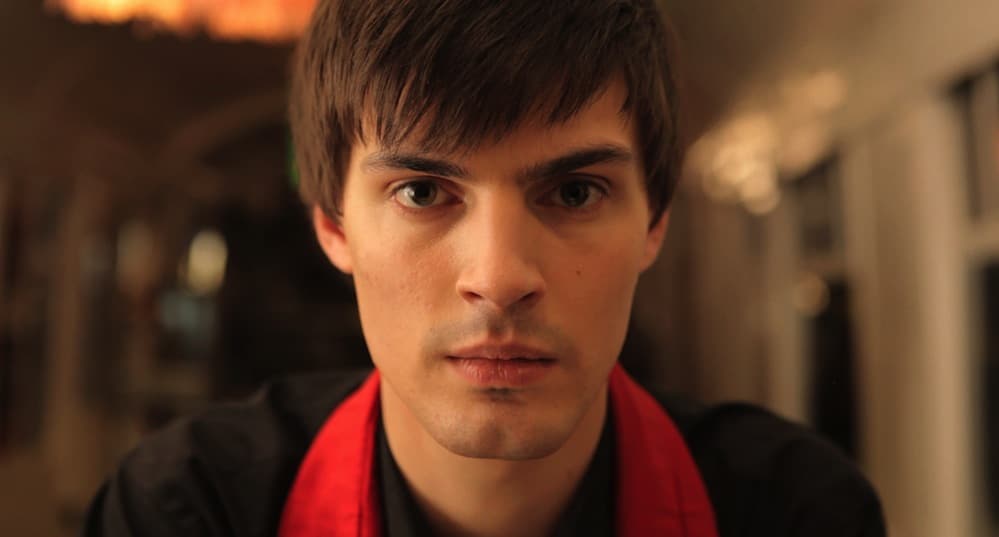In the science fiction movie Frequencies, the idea of a society in which each person is given a unique frequency from birth is explored. It was a 2013 independent low-budget movie. By box office standards, the movie did not perform well commercially; it only made a little sum of money. Yet, it received favourable reviews from reviewers and is now referred to as a “film festival darling” because it was screened at various festivals and received some honours. Throughout the years, the film has developed a cult following, and some people think it’s a hidden gem. Spoilers ahead for the 2013 film Frequencies’s narrative and conclusion.
One of the experts from WriteMyPaperHub.com, a writing service that produces expert content, wrote this post.
Oh, and if this post didn’t cover all of your questions, leave a comment here or send me a message on Facebook chat, and I’ll get back to you. Using the site’s search bar at the top, you can locate more film analysis.
Frequencies Concepts Explained in a Movie

What’s the plot of the movie Frequencies?
An individual’s intelligence, social standing, and future are all determined by a notion in the movie called frequencies. Zak, a young man with a low frequency, and Marie, a young lady with a high frequency, are the main characters of the novel. Zak and Marie connect despite their differences, and they start to doubt the rigid social structure based on frequency.
How do Frequencies work?
The world’s population is governed by a group of scientists who assign each child a particular frequency at birth. Many elements, including IQ, physical traits, and genetics, influence the frequency.
How is the utilisation of frequencies?
Frequencies are used to categorise people’s potential, social standing, and occupation. High frequencies are associated with intelligence, achievement, and privilege. Individuals with low frequencies are consigned to inferior social and economic statuses because they are thought to be less clever. The individual’s life is then governed by the frequency, including the education they obtain, the job they have, and the social contacts they are permitted to engage in.
How are frequencies recognised by people?
It is not made clear how individuals with various frequencies can identify one another. The frequencies are indicated to be openly displayed on each individual, much like a name tag would be worn, so that others may quickly see and recognise a person’s frequency.
unique devices
Also, it’s possible that people are taught to detect and understand the various frequencies from an early age and that society is set up so that it is simple for people to recognise and communicate with others who have similar frequencies. It’s also conceivable that everyone possesses a gadget that can scan people’s frequencies and display them to the user.
Why Frequency Changes?
It is initially believed that frequencies are assigned once and for all, determining the entire course of a person’s life. In a later scene of the movie, it is made clear that specific words and phrases have the ability to modulate frequencies.
It is discovered that a select few people, including Zak and Marie, have the capacity to modulate frequencies. They utilise it to regulate the equality in the particular society as well as the individual frequencies.
Frequency Spoiler for the film
The plot twist in the movie is that the power of words and communication, rather than heredity or other fixed variables, is what allows one to alter frequencies. Words have the power to influence reality, alter a person’s life, and transform society when utilised properly.
Who is able to alter frequencies?
Not only a select few people has the capacity to alter frequencies. Instead, it’s a skill that anyone can acquire and apply. Theo shows Zak and Marie how to modulate frequencies; it is believed that they would later instruct other people. By doing this, the filmmakers avoid replacing the old elite with a new one and instead highlight the need of sharing knowledge to advance society as a whole.
As a result of this story shift, Zak and Marie are able to overturn the frequency system and establish a new civilization in the film Frequencies. It also serves as a potent metaphor for the influence of language and the notion that words determine what is real.

What is the modulation process?
Modulation enables altering a person’s frequency by employing specific words and phrases. When uttered to a person, certain words may occur more frequently or less frequently. These idioms or proverbs passed down through the years are particular, distinctive, and endowed with a certain strength.
Although the modulation process is difficult, one can get more skilled at it with practise and training. It involves a lot of focus and concentration and is not always successful. Modulation requires effort over time, much like any work on one’s identity, awareness, or self-esteem; it is not a magic trick.
Side Effects of Modulation
It is made clear that while words can alter their frequency, they also give the speaker authority over the listener. This now offers a greater risk than having an unequal society based on arbitrary frequency distribution.
What function does music serve?
In the movie, it is demonstrated that music has the power to balance the listener’s frequencies and counteract the words’ capacity to induce mind control. Even so, the video does not go into great detail about how it can aid in seeing back into the past. In a nutshell, information has been lost to the passage of time over the years.
The conclusion is that words have the ability to influence reality and people’s thoughts, and that music is the human race’s unifying language that promotes equality. The frequency system is a flawed indicator of a person’s intelligence, potential, or worth, much like any other flawed proxy we have in our world as a standardised system.
Frequencies Movie| Plot Summary
So who is Zak?
Young man named Zak was born with a very low frequency. He is negative seven. Without luck, chance, or future, it is said to be extremely unusual and dreadful. He is reduced to a lower social and economic position due to his low frequency and is thought to be less intellectual. He is initially shown as a recluse who is frequently bullied by his friends and is not well-liked by them. But, in this society, bullying is accepted as usual.
Zak is portrayed as being a determined and resourceful person throughout the entire movie. He is resolved to alter his frequency and raise his social standing since he is dissatisfied with his place in society as it is. Also, he demonstrates compassion and caring behaviour, especially when he connects with Marie.
Ziele Zaks
In the movie, Zak wants to alter his frequency and raise his social standing. He grows more curious about the nature of the frequency system and the ethics of the society it generates as the plot develops. He challenges the system and ultimately decides to support Marie in her efforts to alter it. He shifts his attention from his own interests to the system and the individuals who are a part of it.
Has Zak evolved?
Zak takes the initiative in the rebellion against the frequency system as the plot develops, demonstrating to the audience that his low frequency does not characterise him as a person. He demonstrates that the frequency system is defective and is not a reliable indicator of a person’s potential because he is astute, resourceful, and capable of leading a revolution.
So who is Marie?
Youngster Marie was born with a high frequency. She is offered opportunities and privileges that are not available to individuals with lower frequencies because of her high frequency, which makes her appear intelligent. She is first portrayed as an accomplished student who enjoys popularity among her friends and peers. Nonetheless, [Marie] thinks that because of her high frequency, she lacks empathy and struggles with emotion expression. To live a more typical life, her parents would prefer that she have a lower average frequency.
What drives Marie to assist Zak?
Marie is determined to comprehend the tight social hierarchy that is built on frequencies. She begins to question the morality of the system. Despite their different frequencies and her limited empathy, she connects with Zak when they first meet.
Equal rights campaign
Marie is attempting to comprehend and modify the frequency system. She develops a growing curiosity about the nature of intelligence and the effects of social manipulation as the plot progresses. She fights for the rights of persons with low frequencies and aids Zak in comprehending the moral ramifications of the frequency system.

Will Marie alter?
Marie’s personality changes as the novel goes on, and she becomes a more self-assured and determined person. She joins Zak in the fight against the frequency system as his ally, proving that she is not an emotionally cold person despite having a high frequency. She is devoted to reforming the system and fostering equality in society and is caring, inquisitive, and tenacious.
Theo
Theo, a close friend of Zak, was born with a low frequency as well. He and Zak have a good bond and are frequently seen together. Like Zak, Theo is bullied by some of the high-frequency individuals.
why Theo assists Zak
Theo, like Zak, is a victim of the frequency system and seeks to alter his frequency in order to elevate his social standing. He is an optimist and Zak appreciates his friendship. Zak and Marie are assisted in their task by Theo, who joins them. Theo is shown as Zak’s devoted and encouraging friend who will take chances to assist him.
Variable frequencies
Zak and Marie learn that by employing a precise combination of words, they may alter both their own frequency and that of others. They are able to question the rigid social structure based on frequencies thanks to this talent, which eventually prompts them to doubt the system’s morality.
They make society more equal by raising the frequencies of people with low frequencies and lowering the frequencies of people with high frequencies using their power to shift frequencies. The crucial component that enables Zak and Marie to lead the revolt against the frequency system and establish a new society where people are identified by their potential rather than their frequencies is their capacity to change frequencies.
That has to be love!
When Marie and Zak learn that modulation words have a mind-controlling impact, they start to doubt their love for one another and think of it as a byproduct of the frequency-changing process. In one scenario, Marie orders Zak to attack her, and he complies, demonstrating that at that very moment, he lacked free will. Their relationship becomes complicated as a result of this.
Movie Frequencies| How does it connect to real life?
The movie examines the idea of fixed social hierarchies and how they might be restrictive for people. We observe racial, gender, financial, and other societal hierarchies in real life that might limit people’s possibilities and potential.
It introduces the nature vs. nurture debate by showing how a person’s potential and ability depend more on their own potential than just their environment. In actual psychology, this is a topic that is frequently discussed.
The movie demonstrates that we have the power to alter both our circumstances and our own behaviour, and that a person’s potential is not limited by their environment. Real-world self-help and personal development philosophies have parallels to this philosophy.
We saw love and kinship triumphing. This idea can be compared to real-life relationships that cross cultural borders, much as Zak and Marie develop a bond despite having differing vibrational frequencies.
This concept of frequencies is similar to real-world problems with standardised testing, which can be constrictive and unfair to some people.
Frequencies Movie| The epilogue
We succeeded in changing the world, adds Zak. We accomplished it collectively, but that’s only the beginning; there is still more work to be done, Marie responds.
The last scene depicts a brand-new society. Zak and Marie are pictured walking together while being surrounded by a diverse collection of individuals who are all treated equally despite having various frequency levels. The two also decide to think that their feelings for one another are genuine and not just a modulation-related side effect. The conclusion inspires optimism for a better future and serves as a reminder that people who are willing to stand out for what is right may bring about change. But, it does seem as though some proxy measure will eventually take the place of the frequency system; how else could a select few rule the majority?
What did you think of the story and resolution of the 2013 film Frequencies? Please provide your feedback below.
ALSO READ THIS: The Seeds Of Happiness Full Movie Explained
